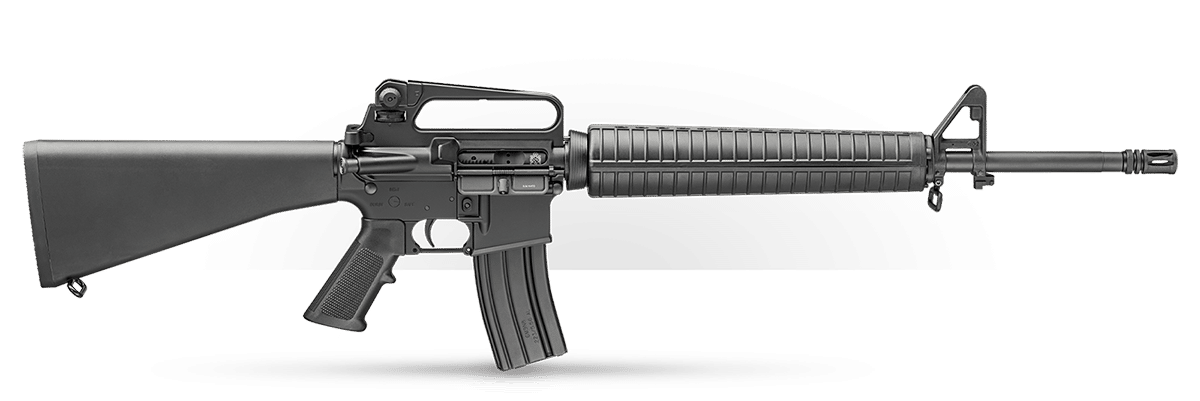In today’s article, Francisco Jardim gets a first look at the brand new Springfield SA-16A2 rifle. The SA-16A2 was loaned to the author by Springfield Armory so he could offer his opinions on the gun for The Armory Life readers.
Springfield Armory’s new release just brought back some memories about the 1980s: President Ronald Reagan restoring confidence in America both at home and abroad, the Sony Walkman making our music truly portable, “The Terminator” and “Back to the Future” were in the movie theater and tickets only cost around $4, the M1 Abrams tank gave us hope of beating the Russians on the ground in Europe if the Cold War got hot, and the 5.56mm M16 was updated into a true “rifleman’s rifle” in the form of the M16A2.
As a gun writer, I often get the opportunity to try out guns before they get released. Needless to say, this is a nice perk of the job. So, when I was offered the chance to test Springfield Armory’s new retro-style SA-16A2 I eagerly accepted. With all the flat-topped, carbine-style AR’s out there today, I thought this classic-style rifle would make for a refreshing change.
SA-16A2 Details
The SA-16A2 looks at first glance like a virtual twin of the M16A2 5.56mm rifle. This impression is further reinforced by the “Property of U.S. Gov’t” markings on the lower receiver, as well as the “BURST” setting for the safety/selector lever. Yes, you read that second part correctly. But, don’t get too excited; naturally, the rifle is semi-auto only.
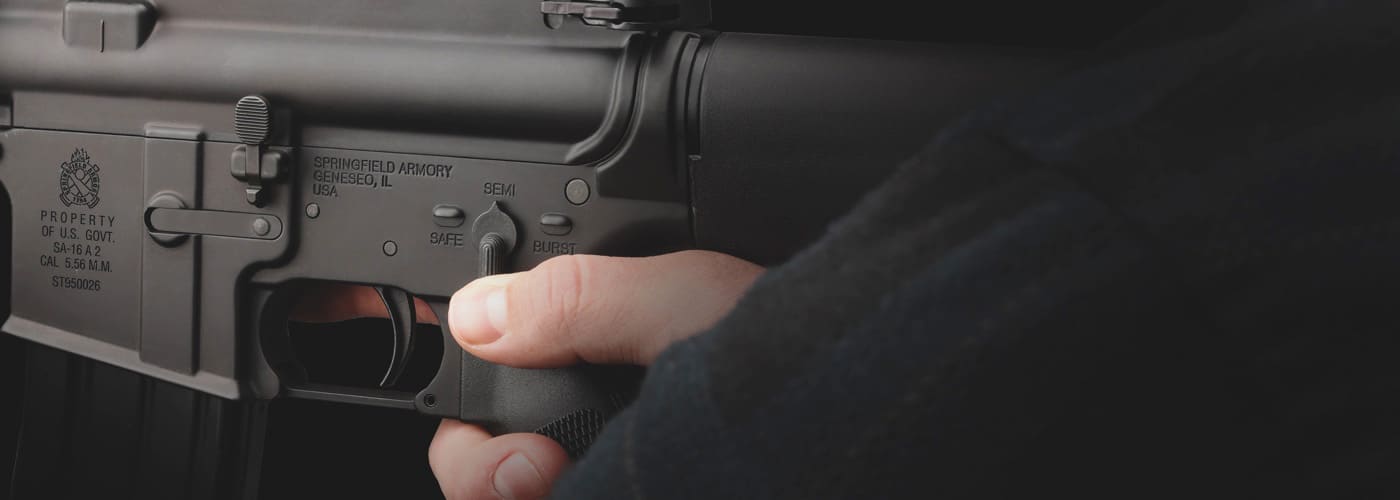
Frankly, Springfield could have stopped at this point and called it a day, and it would be easy to call the retro-pattern rifle a success. However, in addition to following the overall pattern and look of the M16A2, the rifle features three notable enhancements.
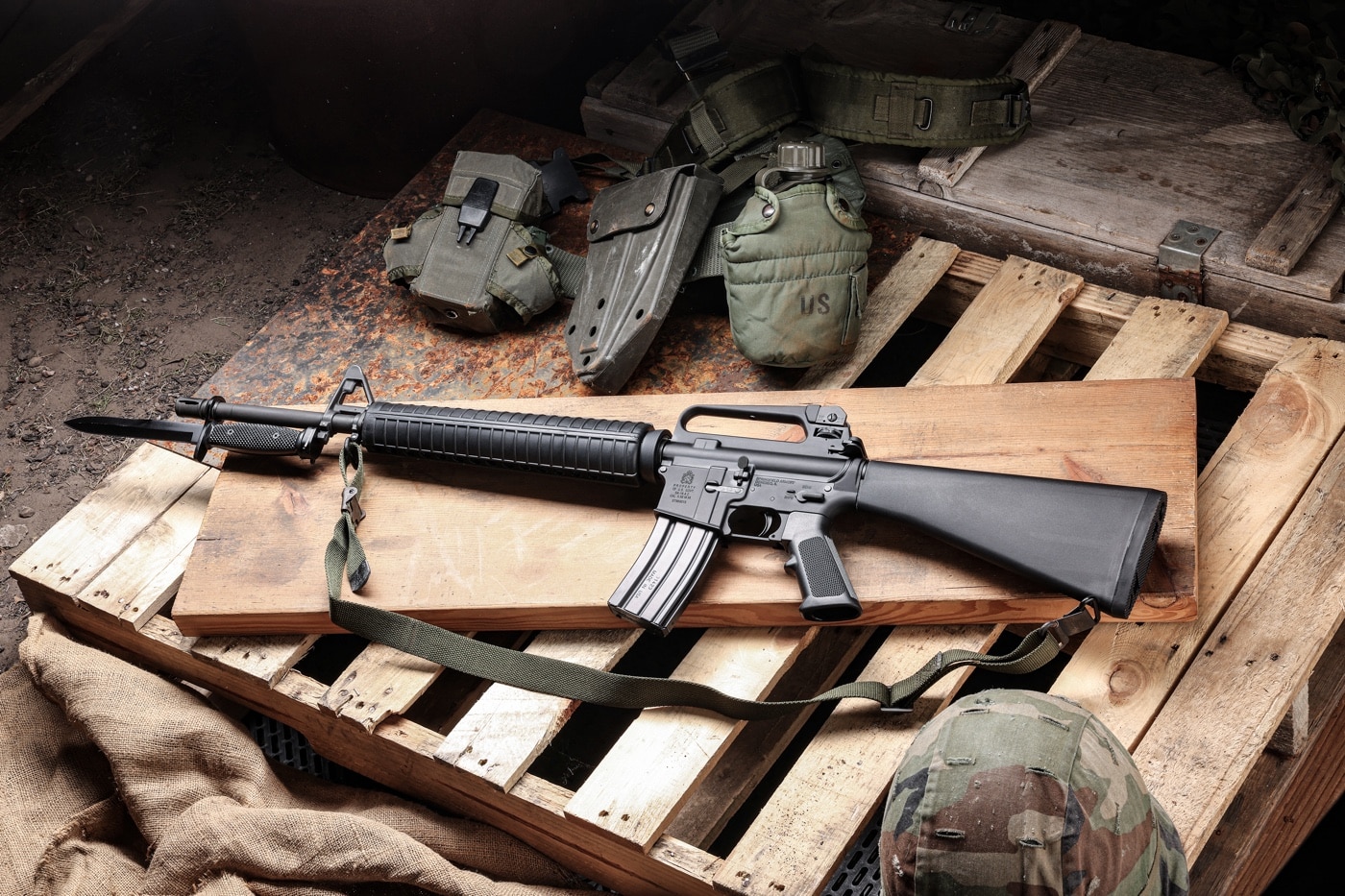
First, the upper has the feed ramps relieved for M4-pattern relief cuts for improved feeding and function. Second, the magazine well is subtly flared to allow for easier feeding of magazines. And lastly, the rifle features Springfield’s Accu-Tite nylon-tipped tensioning screw in the lower receiver.
To access it, simply remove the pistol grip and adjust it with an Allen key until you have removed any slack from between the upper and lower receiver. Just make sure you don’t make them so tight you have difficulty driving the receiver pin out.
SA-16A2 Origins Found in M16A2 DNA
In case you are unfamiliar with the military M16A1 and M16A2 rifles, let me offer a little background to illuminate how the A2 came about and how it differed from its predecessor. By the 1980s, the M16A1 rifle had provided nearly two decades of American military service and was widely in use by the military forces of free world allies around the globe.
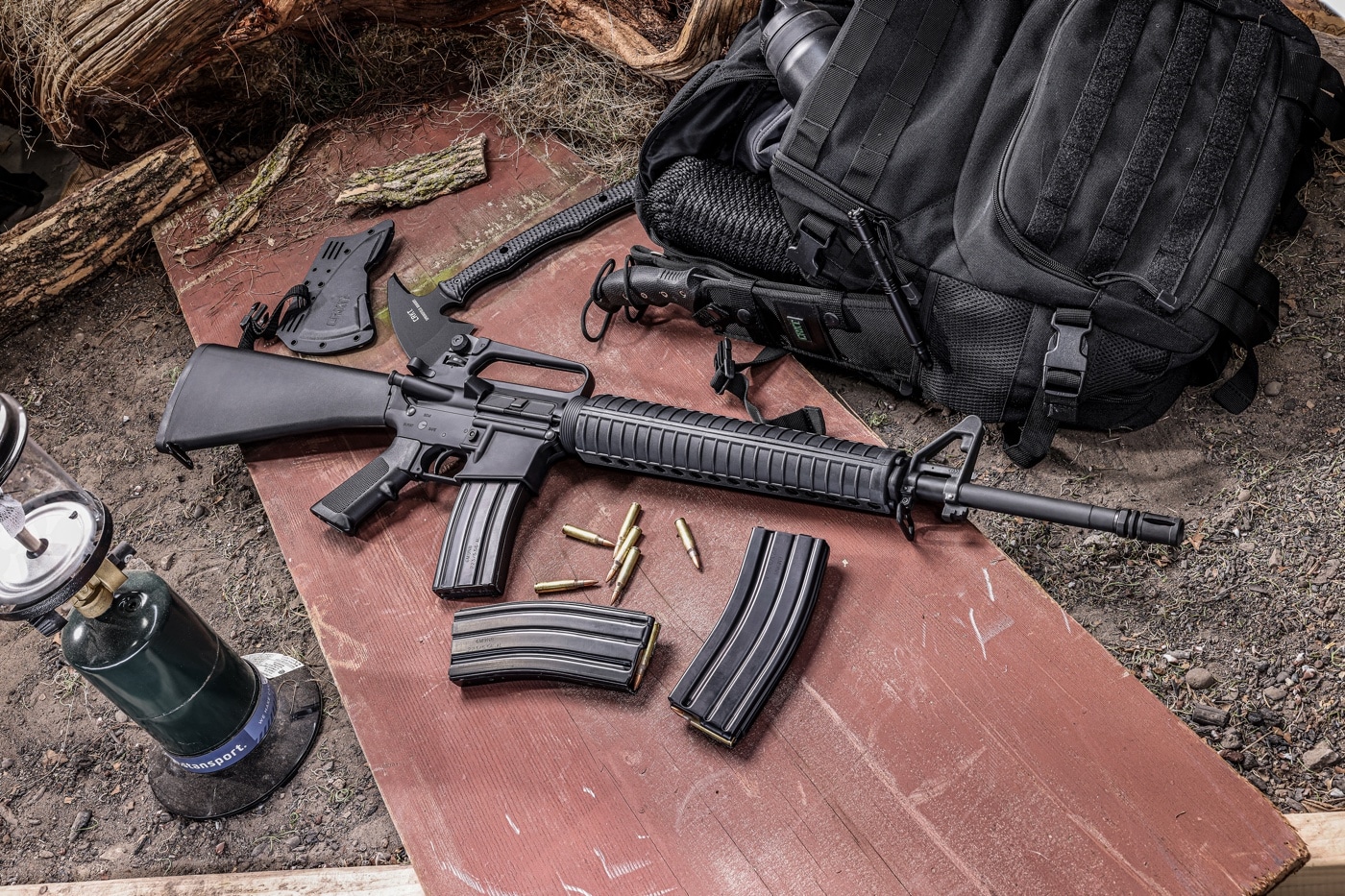
In addition, its 5.56mm M193 ball cartridge (based on the .223 Remington) had become a NATO standard. [Ed. note: Be sure to read Can 5.56 Shoot .223?]
What had been truly revolutionary in the 1960s was by the 1980s the accepted norm. At its adoption, the M16 (and later, M16A1) was a truly revolutionary design featuring space-age materials and construction. But, as with all things, there was still room for improvement.

The M16A2 was developed as an improved M16A1. It began with a request from the United States Marine Corps (U.S.M.C.) whose training doctrine stressed rifle marksmanship more than the other services. They wanted to enhance the accuracy potential of the rifle and tailor it to their aggressive combat doctrine.
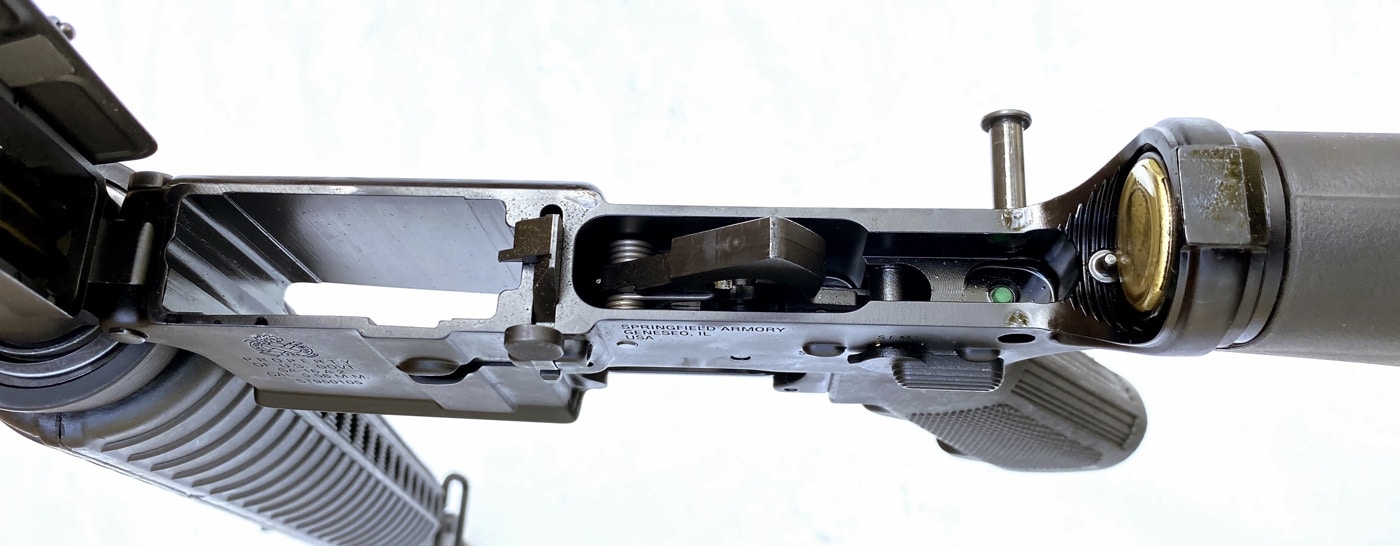
Unsatisfied with the simple dual aperture flip rear sight of the M16A1, the Marines wanted their riflemen to be able to easily make refined windage and elevation adjustments out to 800 meters from the rear sight while in action on the battlefield. In addition, they wanted a round with greater range and penetrating power. That latter goal emerged independent of their efforts to improve the rifle in the form of NATO adoption of the 62-grain, steel core bullet, SS109 cartridge as standard (the M855 in U.S. military nomenclature).
The Marines also wanted a sturdier forend and stiffer barrel forward of the handguard for bayonet fighting. Most controversially, the M16A2 would abandon the M16’s full-auto function in favor of a three-round burst feature. Studies on engagements in the Vietnam War led to a conclusion that three rounds were the most efficient number to let loose at an enemy with one pull of the trigger, anything more generally being wasted.
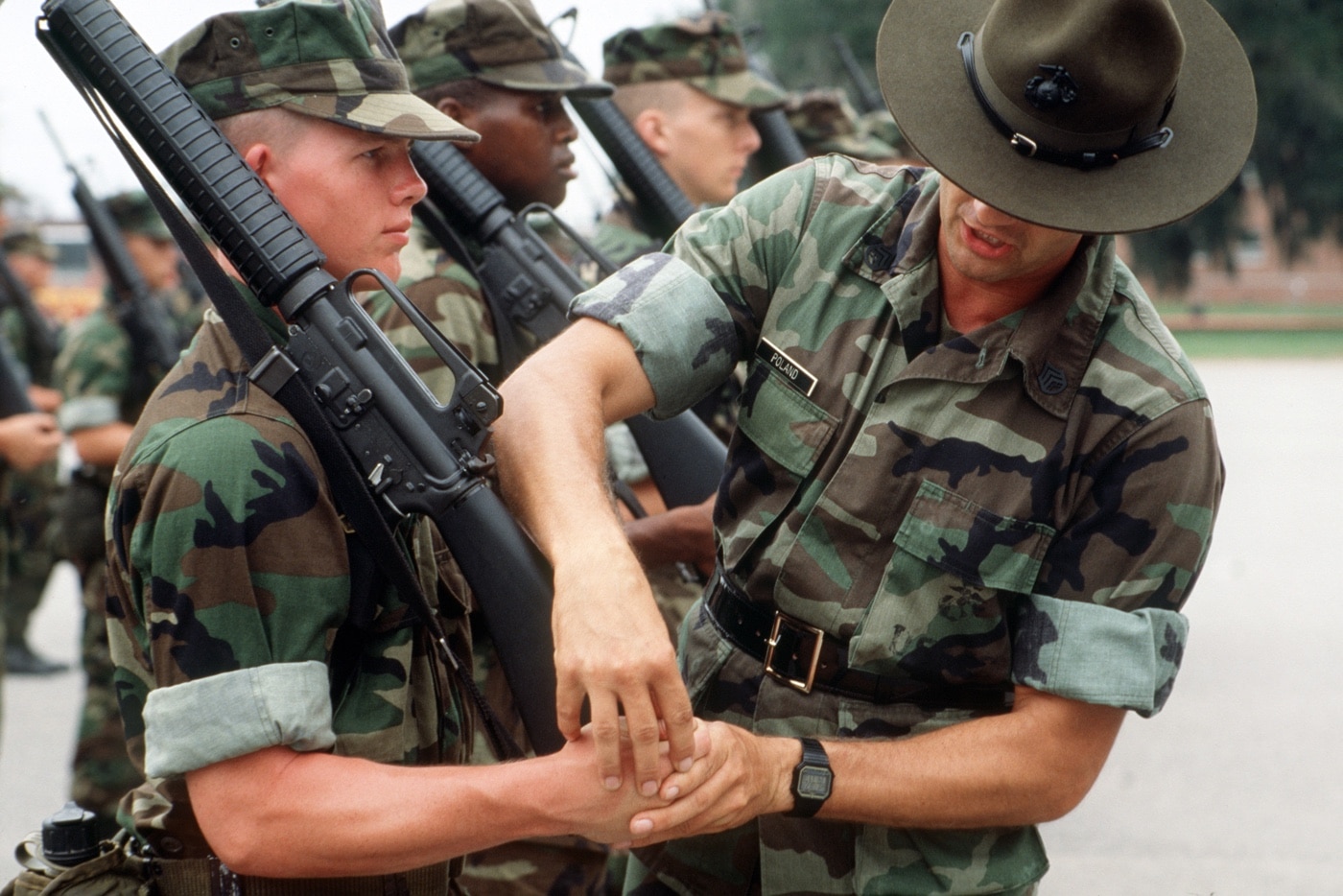
The earlier M16A1 featured a very slow 1:12” rate of twist designed for lighter bullets than the 62-gr. round, and was not effective at stabilizing the longer or heavier bullets. As a result, the new M16A2 featured a much tighter 1:7” rate of twist.
[Learn about the 1:7 twist rate.]
Rounding Out the Rifle
In addition, the new M16A2 featured built-in case deflector on the upper receiver just behind the ejection port, designed to help southpaw shooters use the rifle. The rifle’s new A2 flash hider was generally liked, too. Unlike the A1 flash hider that was slotted all around its circumference to resemble a sideways birdcage, the A2 flash hider was solid on the bottom so gas was directed upward only. The improved A2 flash hider provided some muzzle rise compensation and prevented a prone rifleman’s shots from stirring up the dust below the muzzle and revealing his position to the enemy.
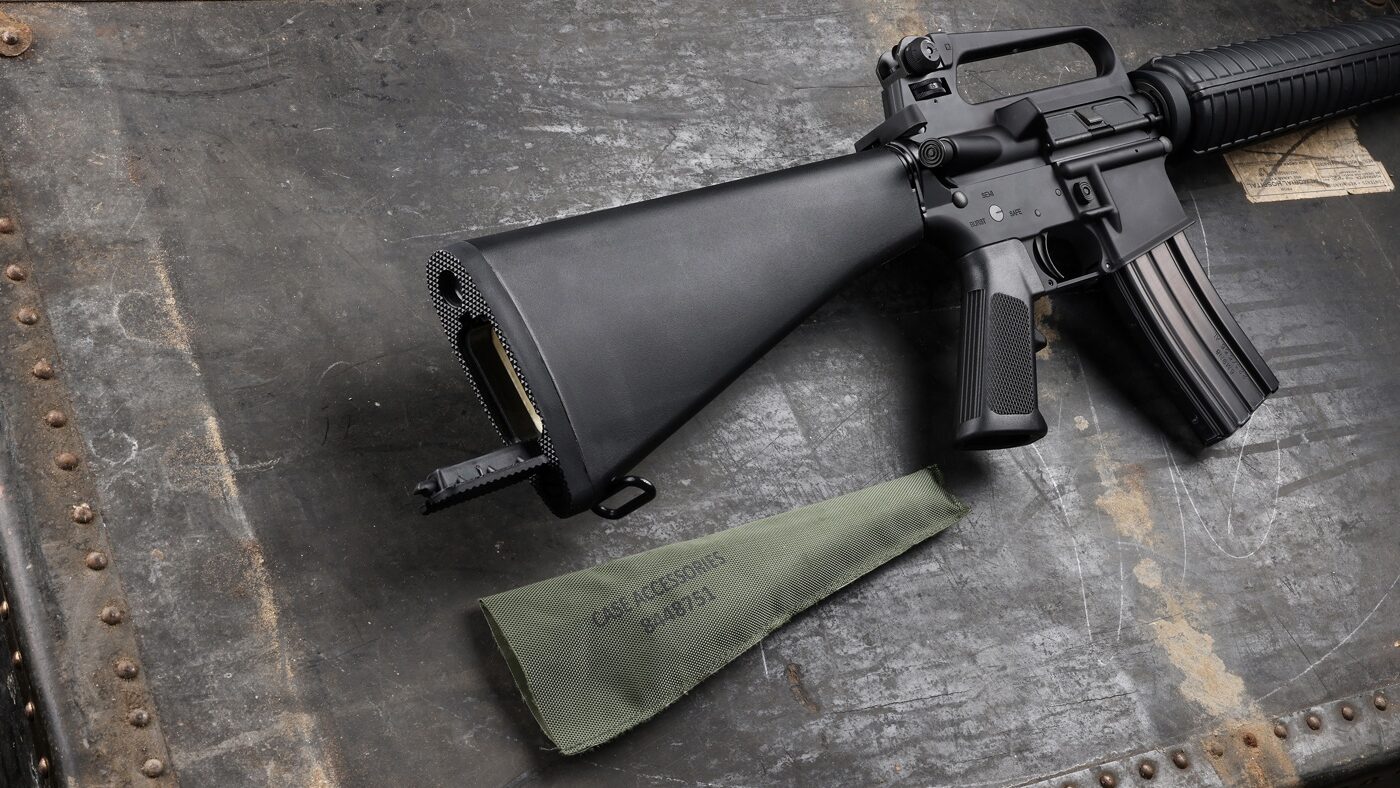
Two other well-received changes were the M16A2’s new, easier-to-see square front sight post that replaced the old round one, and new stocks made from a vastly stronger DuPont Zytel glass-filled thermoset polymer to replace the original, crack-prone, cellulose-impregnated phenolic resin plastic from the early 1960s.
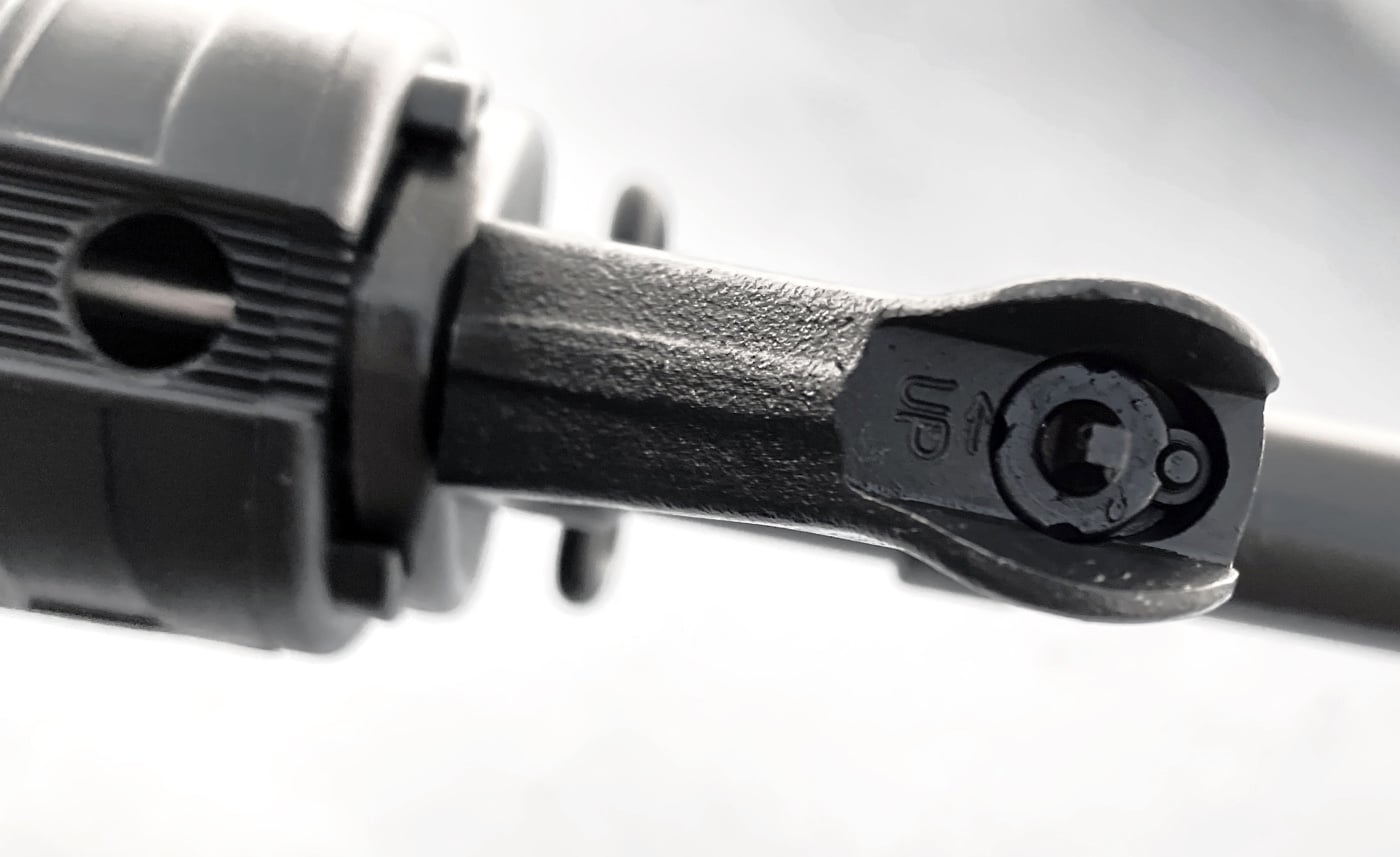
The geometry of the new stocks was changed to improve their ergonomics and utility, too. Changes included lengthening the buttstock just over half an inch, adding a finger ridge on the pistol grip to anchor the shooting hand in position for better trigger control, and tougher, smaller circumference, rounded handguards that were interchangeable — unlike the old M16A1’s fragile triangular handguard.
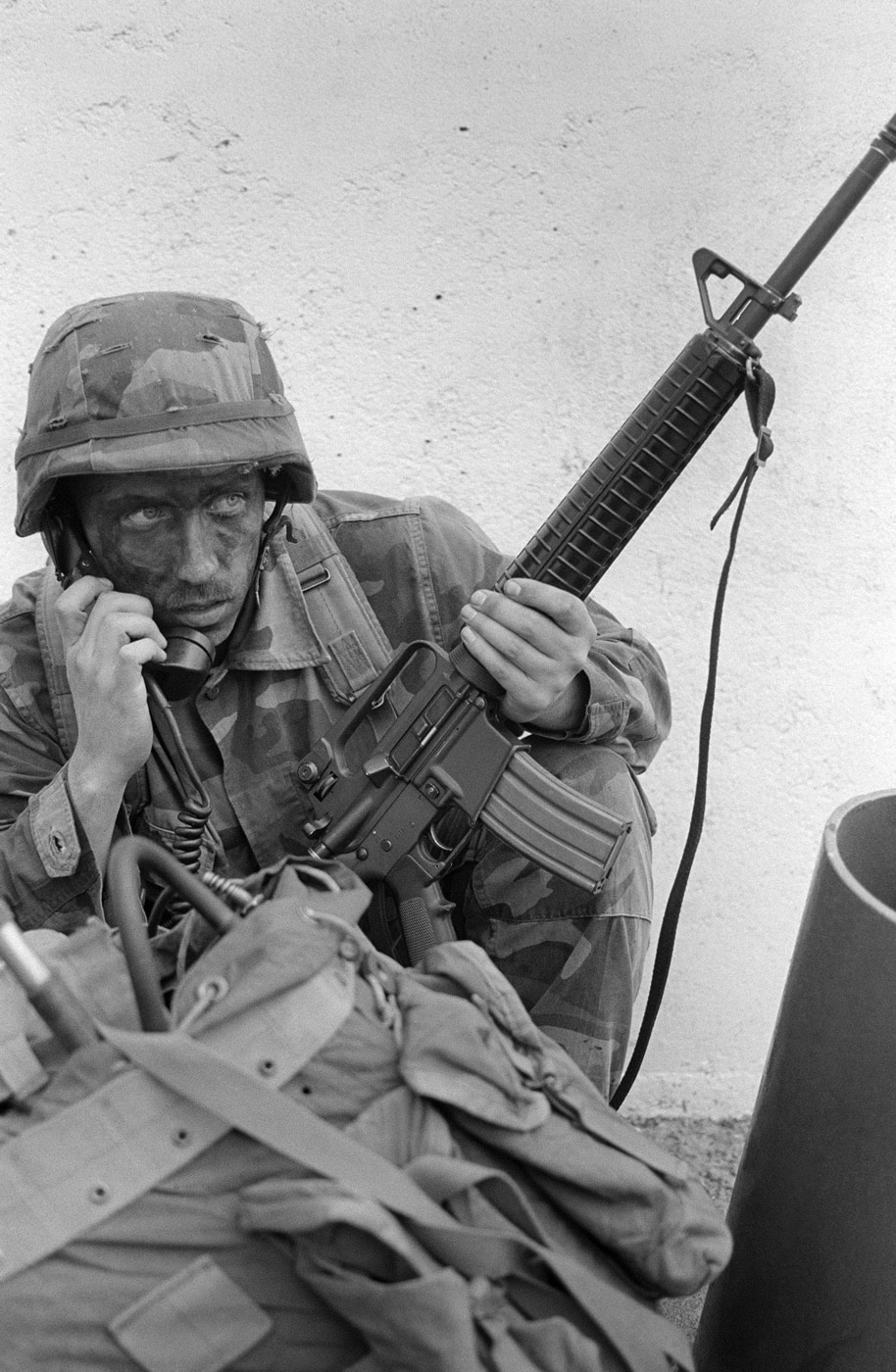
The shape of the spring-loaded “delta ring” that held the handguards on changed from straight-sided to flared outward toward the receiver, making it much easier to hold onto while drawing it back to remove or install the handguards.
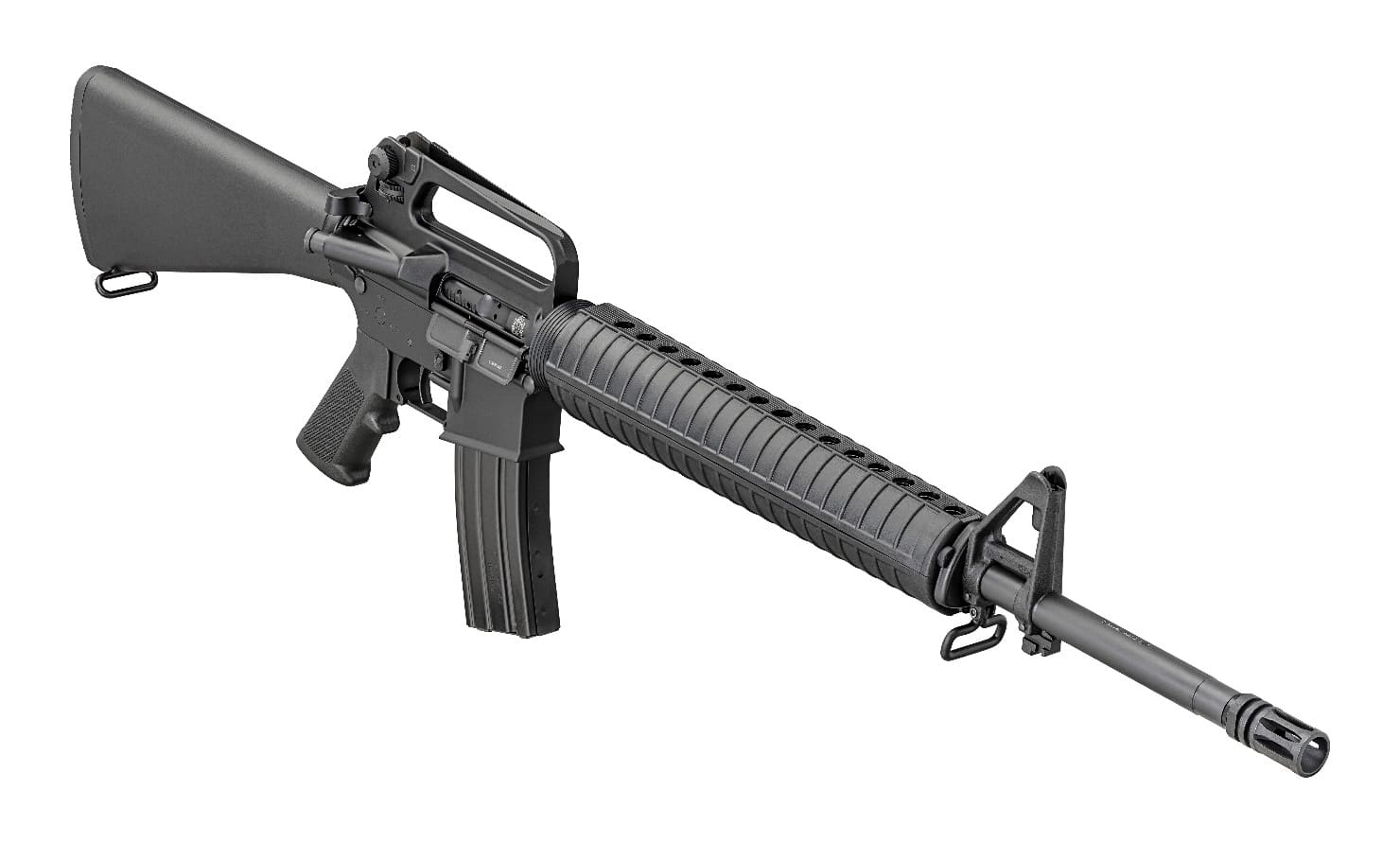
Design changes to strengthen the rifle included beefing up the metal around the front hinge pin by sloping its lower edge into the magazine well and reinforcing the thickness of the threaded ring at the rear of the lower receiver where the buffer tube screwed in. The shape of the forward assist’s head was also simplified, with a circular head replacing the old complex teardrop shape.
In the end, the U.S.M.C. got what it wanted, adopting the M16A2 first, with the U.S. Army following a few years later.
Bursting the Bubble
Of all the M16A2’s new features, the three-round burst capability and fast click-adjustable rear sight were the most controversial. The new sight was wonderful for serious marksmen and a delight on the target range, but the U.S. Army thought it was too complex for the battlefield. It arguably was.
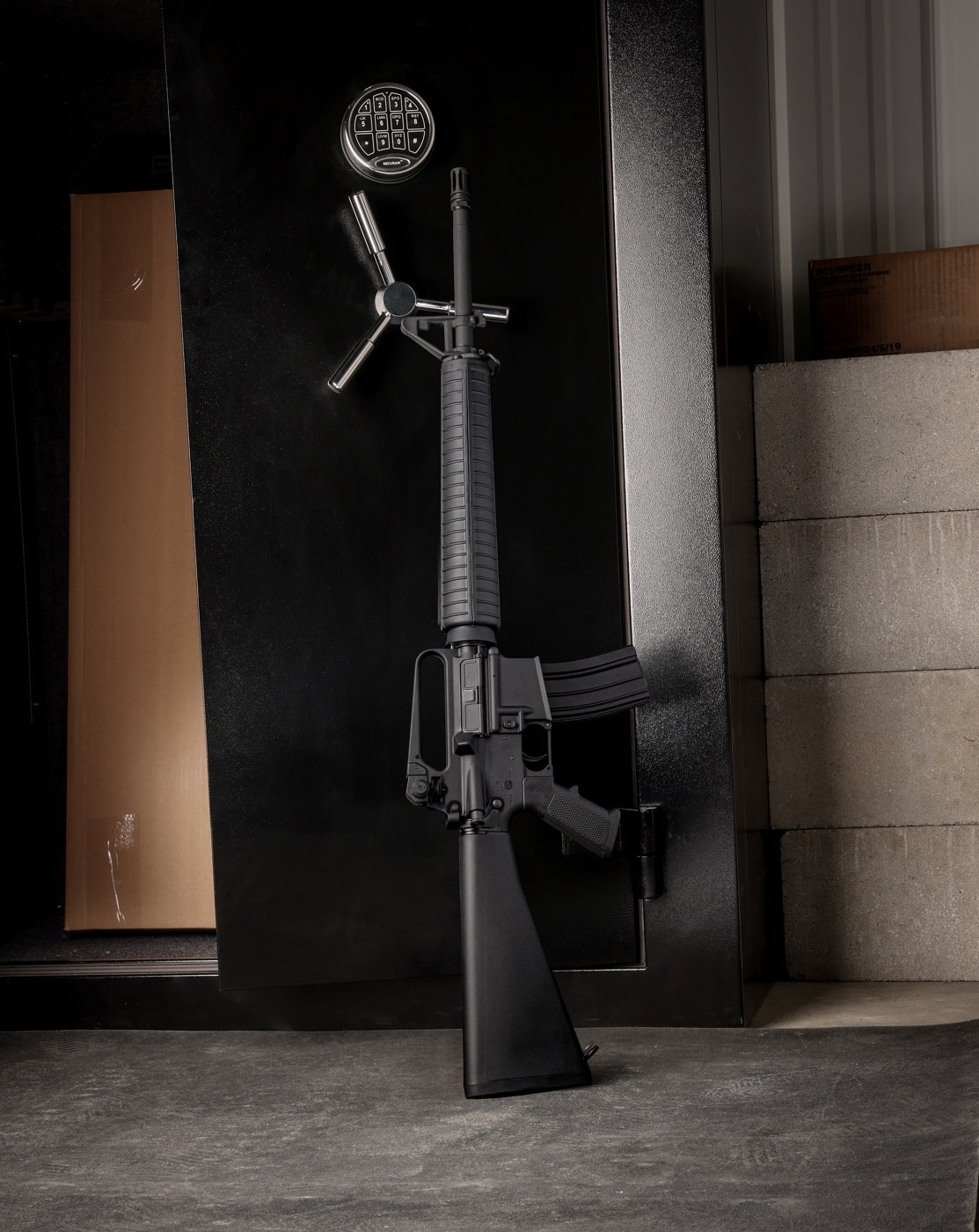
The danger inherent in such a sight was that it might be improperly employed by a less than perfectly trained man resulting in more misses than hits. By contrast, a man with an M16A1 only had to flip the rear sight aperture between close- and long-range positions to be able to adjust elevation to hit a man-sized target.
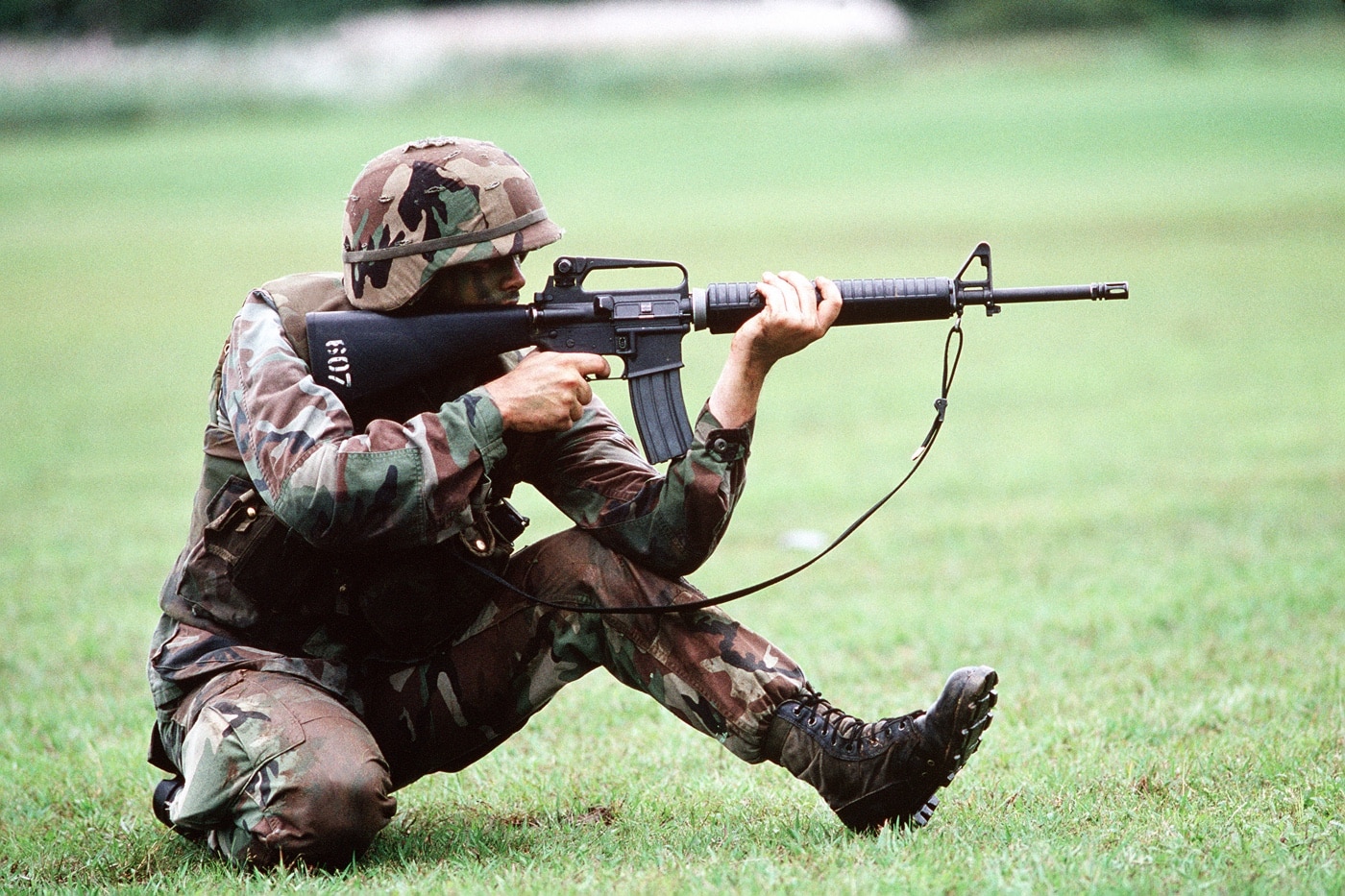
The burst feature, though well-intentioned, was unpopular with many military personnel with experience in ground combat in Vietnam. When on the receiving end of a close-range ambush in the jungle, where the engagement was likely to be won or lost in under a minute, the suppressive value of full-auto fire, even if it only had a psychological effect on the enemy, was seen as a lifesaver.
Hands-On with the Springfield SA-16A2
Shooting the SA-16A2, I couldn’t tell I wasn’t handling the military original. All the features were there, including the M16-style bolt carrier and chrome-lined barrel. I zeroed the rifle easily by bore sighting it at an 11.5” bullseye at 100 yards. A bullseye of that size appears the same thickness as the front sight post at that range. The military training manual for the M16A2 (TM 9-1005-319-10) indicated the rear sight’s elevation clicks equal 3.5 cm (1 3/8 in.) and windage equaled 1.25 cm (1/2 in.) at 100 meters. The SA-16A2’s sight seemed to match this.
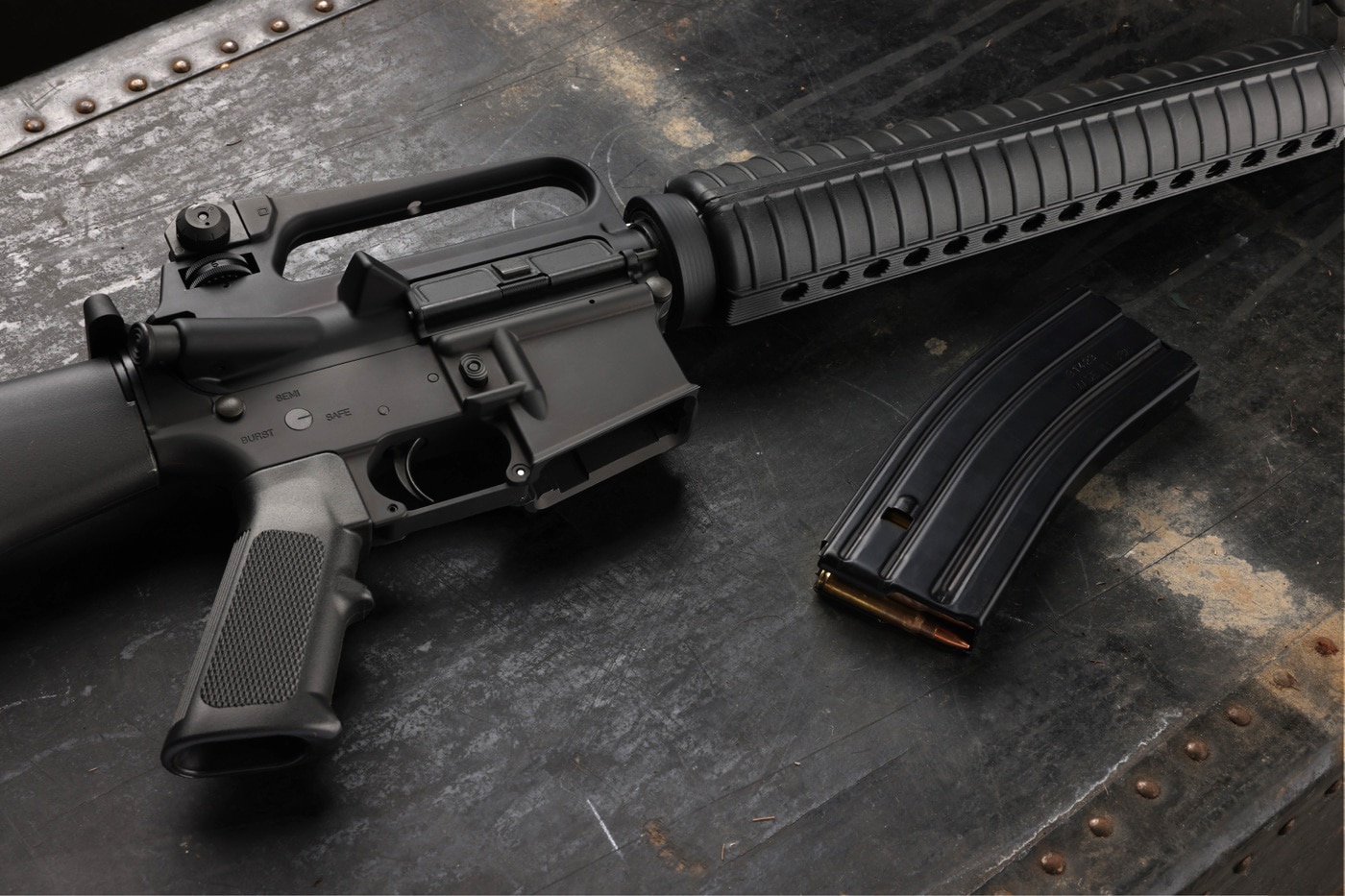
The single stage military trigger had a pull weight of 5.3 lbs. and broke crisply. Since the M16A2 adjusts for elevation with a dial, the dual ring rear aperture just gives you a choice of large ring to allow more visibility around targets inside 300 yards, and a small ring for more precision in aiming at more distant targets. Since my target wasn’t shooting back, I used the small ring.
More than rifle or ammo, the limiting factor for most shooters using iron sights is likely to be their eyesight. Mine is not what it was 40 years ago, but shooting from a Caldwell Shooting Supplies “The Rock” rest at the bench I was still able to get some very impressive five-shot group sizes, with one as tight as 0.94” with Black Hills Ammunition 69-gr. Match King JHP ammo. Overall, with the three loads I tested, the rifle was shooting under 2.5 MOA on average, which in my book is excellent for an iron sights rifle with someone with my eyesight at this stage. Obviously, this rifle shoots better than I can see.
Final Thoughts on the Retro-Rifle
If you are looking for a rifle with a lot of retro appeal, but with some modern enhancements as well as impressive accuracy potential, the SA-16A2 definitely warrants a look. I can see this rifle becoming very popular with competition shooters who participate in NRA’s National High Power Rifle or Civilian Marksmanship Program matches, as well as those interested in military arms or nostalgic about their time in uniform.
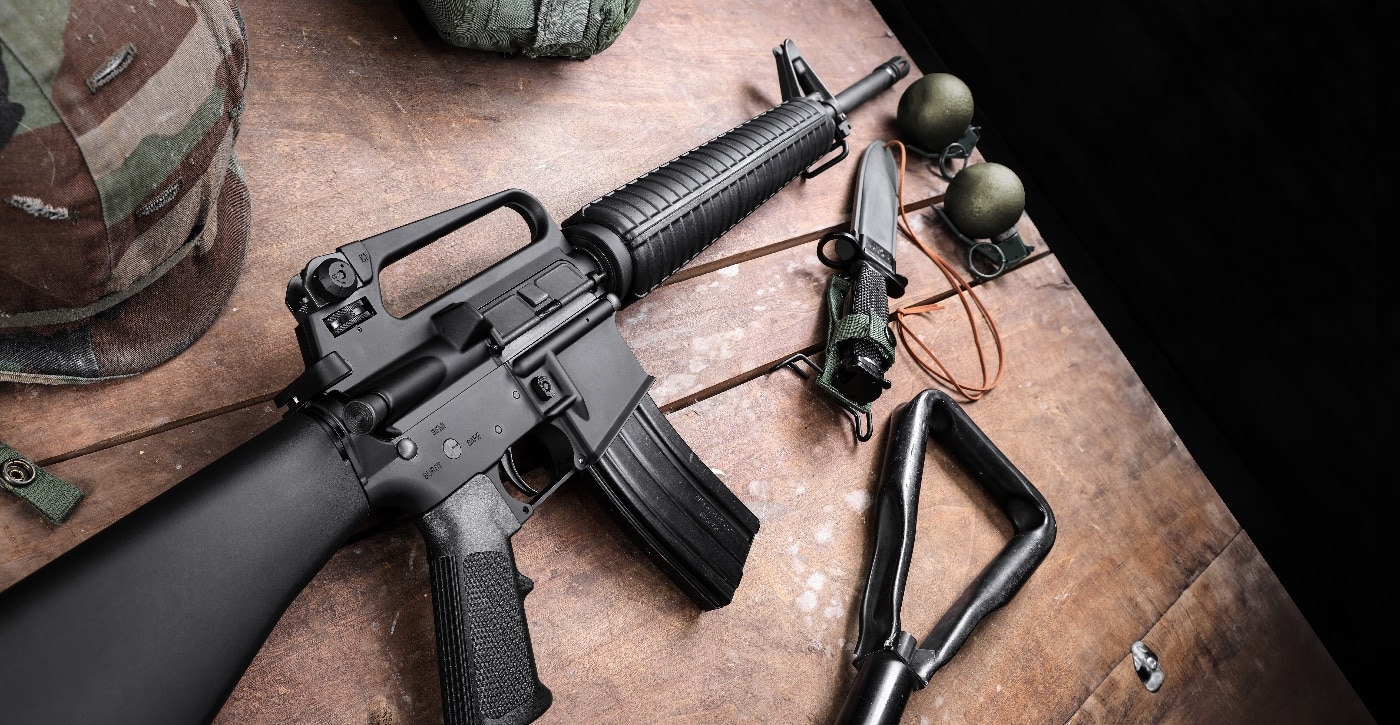
Editor’s Note: Please be sure to check out The Armory Life Forum, where you can comment about our daily articles, as well as just talk guns and gear. Click the “Go To Forum Thread” link below to jump in and discuss this article and much more!
Join the Discussion
Featured in this article
Read the full article here



